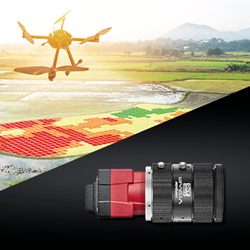There are few herbicides available for specialty crops, making hand weeding the “go to” process. Could intelligent weeding machines be the answer? Based on technology advances made to date, experts say the answer is likely yes.
 Can Artificial Intelligence Help Growers Win the Weed Wars?
Can Artificial Intelligence Help Growers Win the Weed Wars?

Article from | Weed Science Society of America
Weed control in vegetables, flowers and herbs can be incredibly labor intensive, experts with the Weed Science Society of America (WSSA) say. There are few herbicides available for these specialty crops, making hand weeding the “go to” process. Now, though, labor shortages are creating tough challenges for growers and driving food prices higher for consumers.
Could intelligent weeding machines be the answer? Based on technology advances made to date, experts say the answer is likely yes. In fact, artificial intelligence-driven machines are already being used in vegetable crops and in other areas of specialty farming.
Automated lettuce thinners, for example, have become widely adopted and can thin an entire acre of lettuce in minutes. These machines use precisely targeted spot-spraying to reduce the crop to the desired spacing for optimum growth.
Distinguishing crops from weeds, though, is a significantly more difficult task, experts say. Weeds come in a wide variety of colors, shapes, and sizes. In addition, crop foliage can grow in an overlapping pattern or can be hidden by surrounding weeds.
Some companies and public research teams have successfully used computer vision, artificial intelligence, and very powerful computers to distinguish crops from weeds on a small scale. One example: First-generation, vision-based “intelligent cultivators” are now available for use by specialty crop growers.
These hoeing machines use pattern recognition to determine the spacing of crops and the width of planting rows – using the information to guide knives in and out of the crop row to remove weeds. Similar technology is powering new intelligent sprayers that can precisely apply herbicides to weeds only without having to spray the entire field.
Such automated tools hold important advantages over both broadcast herbicides and hand weeding, experts say. Intelligent devices are less costly to develop than herbicides and can be adapted to dozens of crops – whether conventionally or organically grown. They eliminate the need for backbreaking manual labor and allow any herbicides used to be applied more selectively.
Addressing the remaining challenges
Though automated weed control solutions are now available, they have yet to be broadly adopted. Current systems are simply unable to differentiate weeds from crops at a sufficient ground speed to support wide-scale adoption.
A team at the University of California, Davis is actively working on a solution that can help machines quickly and reliably distinguish friend from foe. They propose using smart marking techniques to make crops “machine readable” and easy to distinguish from weeds. In field experiments, they have trained robots to detect and distinguish 99.7 percent of crop plants, even in fields with high weed densities.
Experts say that despite this important progress, further research is needed before artificial intelligence-driven weed management is ready for prime time. And that requires educating broader numbers of weed scientists in the specialized technology and engineering skills needed to drive artificial intelligence innovation.
New public investments
To build a tech-savvy workforce and jumpstart useful applications of artificial intelligence in farming, the USDA’s National Institute of Food and Agriculture recently established two new research institutes.
An institute focused on Future Agricultural Resilience, Management and Sustainability is being led by a team at the University of Illinois at Urbana-Champaign. Scientists will focus on solving major agricultural challenges by advancing research in computer vision, machine learning, soft object manipulation and intuitive human-robot interaction. The institute will offer a new joint computer science-agriculture degree and will serve as a global clearinghouse for collaborative, artificial intelligence-driven research.
A second institute focused on Next Generation Food Systems is being led by a team at the University of California, Davis. Scientists will focus on using artificial intelligence and bioinformatics to understand biological data and processes across our food system. Their goal will be to improve agricultural production, food processing, distribution and nutrition, and to optimize crop traits for yield, quality, and resistance to pests and diseases. The institute will also emphasize inclusive education and outreach to build a diverse, next-generation workforce.
“With the right investments in people and technology, we may see a breakthrough in automated weed control in the not too distant future,” says Steve Fennimore, Ph.D., a member of WSSA and an extension specialist with the University of California, Davis. “It’s easy to imagine hand-weeding giving way to carbon neutral weeding machines that are controlled by artificial intelligence and work around the clock – fueled by field-side charging stations. We would have a more sustainable approach to weed management that would benefit growers, consumers and our environment.”
About the Weed Science Society of America
The Weed Science Society of America, a nonprofit scientific society, was founded in 1956 to encourage and promote the development of knowledge concerning weeds and their impact on the environment. The Society promotes research, education and extension outreach activities related to weeds, provides science-based information to the public and policy makers, fosters awareness of weeds and their impact on managed and natural ecosystems, and promotes cooperation among weed science organizations across the nation and around the world.
The content & opinions in this article are the author’s and do not necessarily represent the views of AgriTechTomorrow
Comments (0)
This post does not have any comments. Be the first to leave a comment below.
Featured Product


